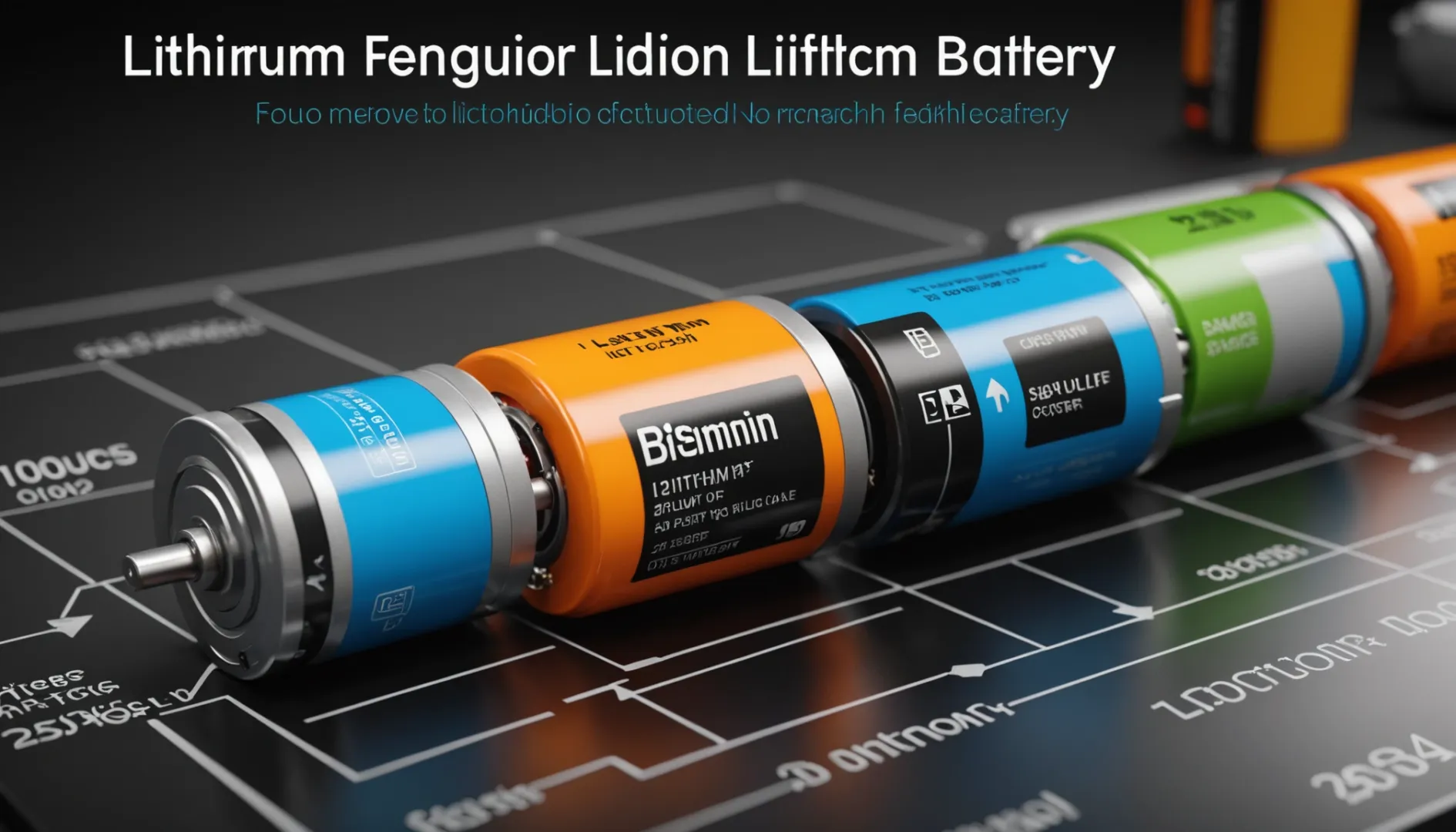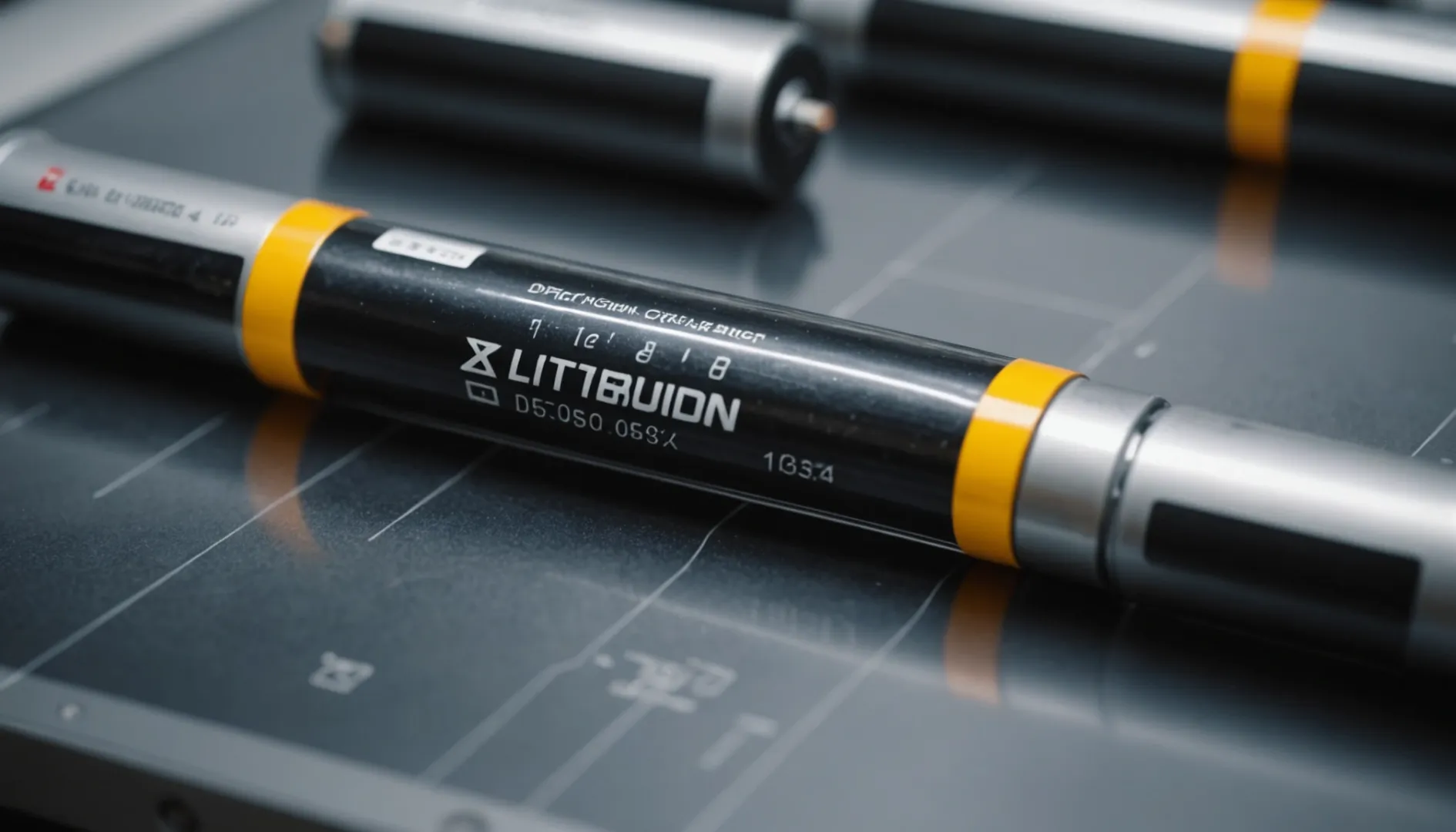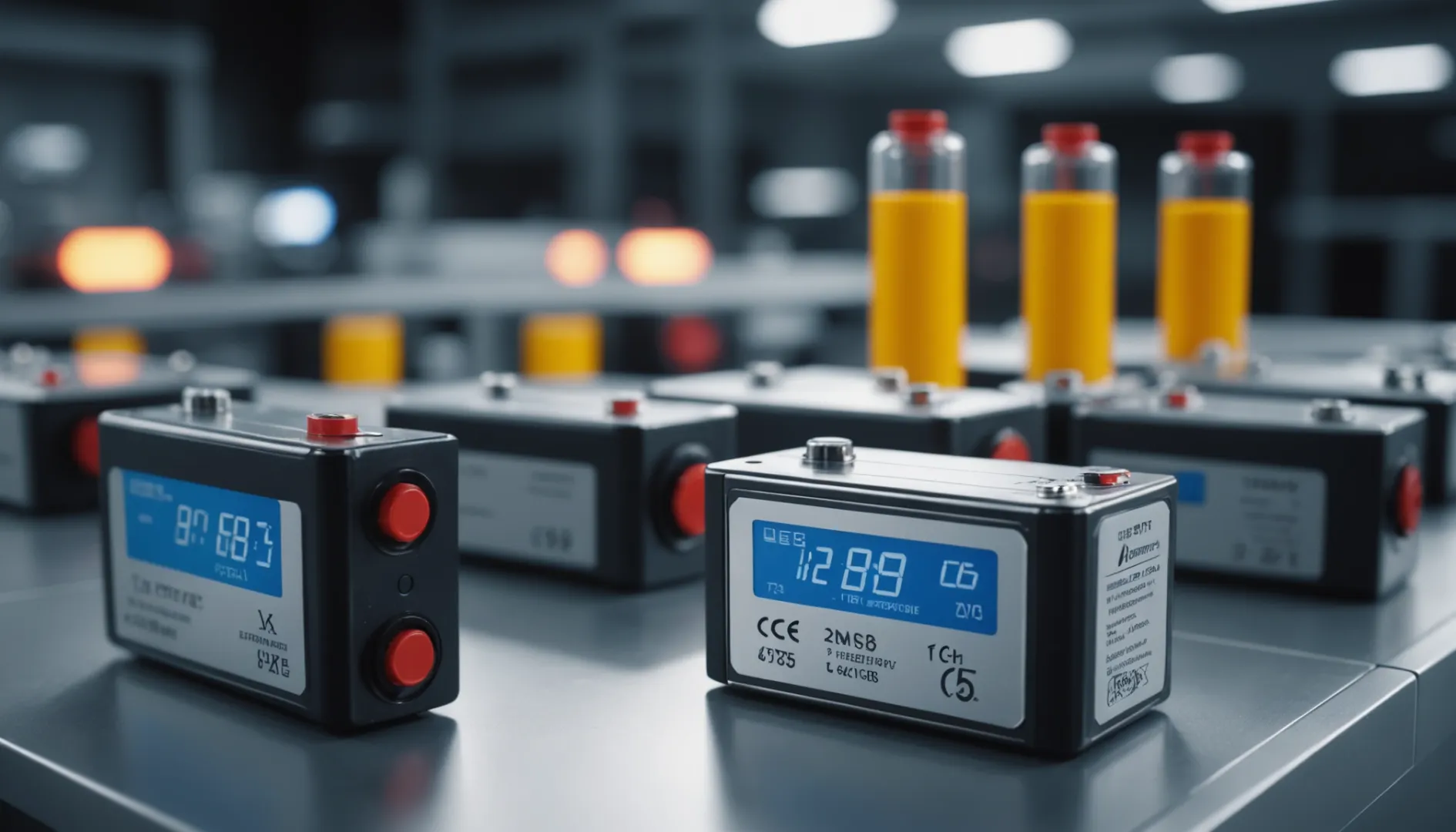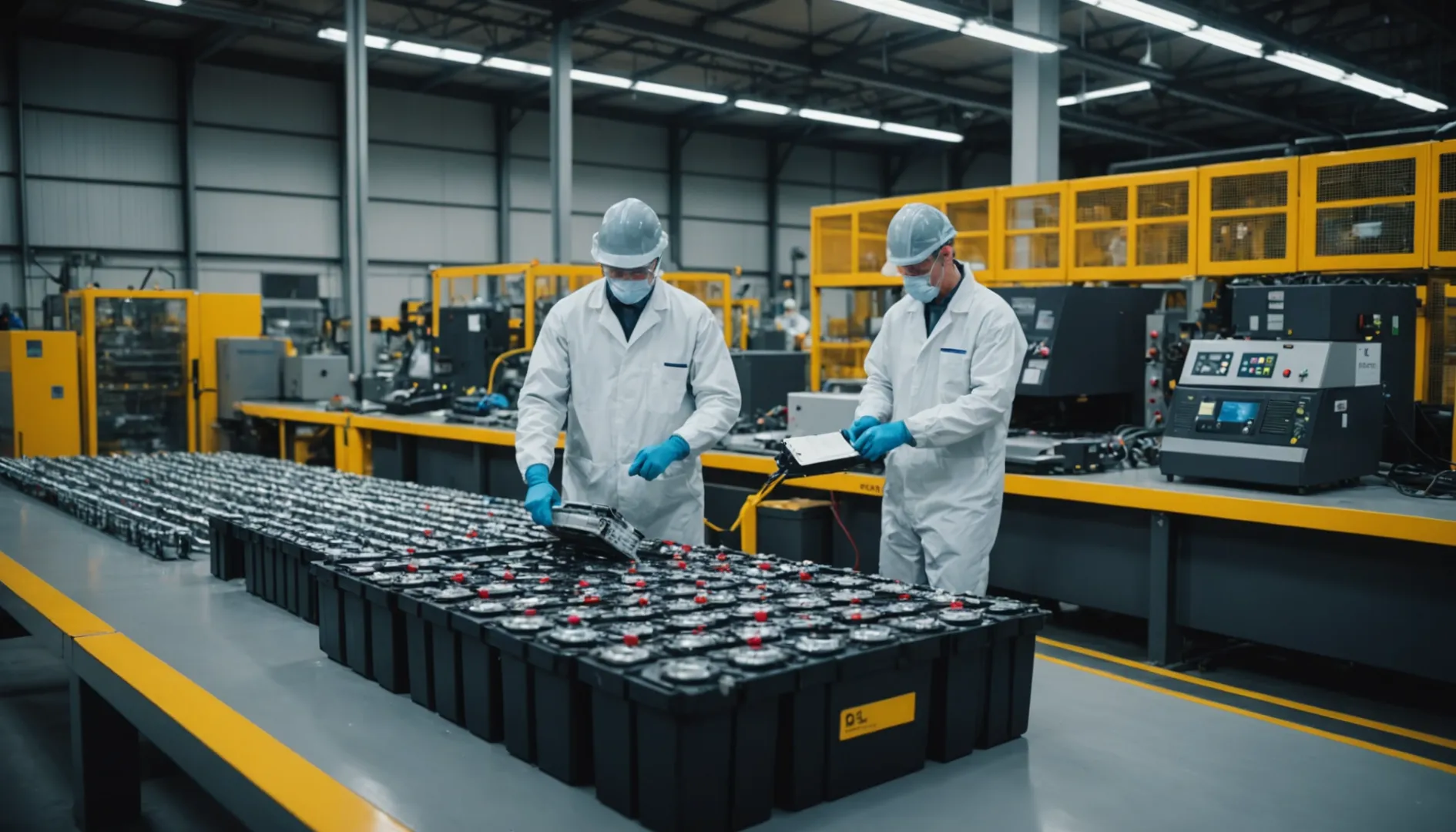Lithium-ion batteries are like the workhorses of our tech-driven lives, but are they built to last for decades?
Lithium-ion batteries aren't the best choice for extremely long-term use because they have a limited lifespan, lose capacity over time, pose safety risks, and face environmental challenges. These factors make them less reliable for applications requiring decades of performance.
I remember the first time I realized my phone's battery wasn't holding a charge like it used to—it was frustrating, but also a learning moment. While lithium-ion batteries are everywhere, from our gadgets to electric cars, their limitations become clear when thinking long-term. The chemistry that powers them is impressive but not invincible; over time, they degrade and may even become safety hazards.
Imagine needing a battery that stands the test of time, something you can rely on for decades. Unfortunately, that's where lithium-ion falls short. This is why exploring alternatives or improving these batteries is crucial, especially if you're planning to invest in long-term energy solutions.
Lithium-ion batteries last 2-10 years.True
Lithium-ion batteries typically last between 2 to 10 years, depending on usage.
Lithium-ion batteries are ideal for long-term storage.False
Due to finite lifespan and degradation, they are not ideal for long-term use.
What Limits the Lifespan of Lithium-Ion Batteries?
Have you ever wondered why your smartphone battery seems to fade away right when you need it most? Let's explore what really limits the lifespan of lithium-ion batteries.
The lifespan of lithium-ion batteries is limited by factors like charge cycles, chemical degradation, thermal exposure, and how they're used. These elements collectively reduce capacity and performance, eventually leading to the battery's end-of-life.
The Impact of Charge Cycles
I remember the first time I realized that my phone's battery wasn't lasting as long as it used to. It turns out, every lithium-ion battery has a finite number of charge cycles—typically between 300 to 5000. Each cycle is like a lap around a track, wearing down the electrochemical components1 bit by bit. Over time, the battery struggles to hold a charge, much like how I feel after running just one lap.
Chemical Degradation
Chemical reactions within the battery are as inevitable as spilled coffee on Monday mornings. Every time lithium ions shuttle back and forth between the anode and cathode, there's a tiny bit of wear and tear. This leads to decreased capacity and increased internal resistance over time, with electrolyte decomposition2 and SEI (Solid Electrolyte Interphase) layer growth being the usual suspects.
Temperature Effects
Temperature is the silent killer of lithium-ion batteries. High temperatures speed up degradation, while low ones make them sluggish—like me trying to function before my morning coffee. Proper battery thermal management3 is essential, especially in electric vehicles where extreme temperatures can lead to permanent damage.
Usage Patterns and Maintenance
How we use our batteries can dramatically affect their lifespan. I learned this the hard way when my habit of charging my phone overnight led to frequent deep discharges and overcharging. Proper charging practices4, such as avoiding 0-100% cycles, can help extend a battery's life.
Evolving Technology
Lithium-ion batteries have come a long way, but the quest for durability continues. The science behind these little powerhouses is evolving rapidly. New materials are being explored, and innovations like solid-state batteries offer promising alternatives that could address current limitations, offering longer lifespans and increased safety.
Environmental Considerations
Environmental factors such as humidity and air pollutants can also play havoc with a battery’s health. I’ve learned that proper storage and usage conditions are crucial to mitigate these risks. Plus, recycling and disposal present challenges as we approach end-of-life for large-scale deployments.
Understanding these factors can help me optimize how I use my batteries, extending their service life across various applications.
Lithium-ion batteries last over 20 years.False
Lithium-ion batteries typically last 2-10 years, not over 20 years.
Extreme heat degrades lithium-ion battery lifespan.True
High temperatures significantly reduce the performance and lifespan of lithium-ion batteries.
How Does Temperature Affect Lithium-Ion Battery Performance?
Ever wondered why your phone dies faster in the heat or cold? Let’s dive into how temperature affects lithium-ion batteries.
Temperature affects lithium-ion batteries by altering their efficiency, lifespan, and safety. High temperatures can speed up degradation and pose safety risks, while low temperatures slow reactions and reduce performance. Managing temperature is key to maintaining battery health and efficiency.
The Impact of High Temperatures
I remember one summer, leaving my phone on the dashboard of my car while running errands. When I returned, it was not just hot to the touch—it was practically screaming for help. That's when I realized how badly heat can affect lithium-ion batteries. You see, high temperatures speed up chemical reactions within the battery, which sounds like a good thing, but it's not. It's like a sugar rush—it feels great initially but then leads to a crash. This acceleration means faster degradation, reducing the battery's capacity and lifespan. And if that wasn’t enough, excessive heat increases the risk of thermal runaway5, a condition as terrifying as it sounds, where the battery heats up uncontrollably, potentially leading to fires or explosions.
Manufacturers are aware of these risks, which is why many devices come with built-in thermal management systems. Think of them as little air conditioners for your battery, using heat sinks, fans, or even liquid cooling to keep things cool.
The Effects of Cold Temperatures
On the flip side, cold weather can be just as problematic. I recall a winter hike where my camera kept shutting down unexpectedly. It turns out that low temperatures slow down the electrochemical reactions in batteries. This can lead to reduced power output and slower charging times—kind of like trying to run a marathon in slow motion. In extreme cold, batteries might even refuse to work entirely.
Some manufacturers suggest warming your devices gradually or using insulation materials to keep your battery cozy. It’s like wrapping your device in a warm blanket.
Balancing Temperature for Optimal Performance
Keeping your batteries happy is all about maintaining that Goldilocks temperature—not too hot, not too cold, but just right. Most lithium-ion batteries are happiest between 20°C to 25°C (68°F to 77°F). Staying within this range ensures they last longer and perform better.
For those of us who rely on gadgets in varying climates—whether we're working with electric vehicles or using devices outdoors—thermal management strategies6 become essential. Using temperature monitoring systems and regular maintenance can help nip potential issues in the bud.
If you're like me and want your batteries to live long and prosper, it’s wise to store them in cool, dry places when not in use and avoid leaving devices under direct sunlight or in freezing conditions for long periods. By understanding these temperature dynamics, we can significantly boost our battery's reliability and lifespan.
Lithium-ion batteries last 2-10 years.True
Lithium-ion batteries typically have a lifespan of 2-10 years.
Extreme heat improves battery lifespan.False
Extreme temperatures, especially heat, degrade battery performance.
Are There Safer Alternatives to Lithium-Ion Batteries for Long-Term Use?
Ever found yourself worrying about the future of your tech gadgets as much as I do? With lithium-ion batteries being the go-to, it’s hard not to wonder about safer, longer-lasting alternatives.
Yes, safer alternatives to lithium-ion batteries include solid-state batteries, sodium-ion batteries, and flow batteries. These options promise improved safety and longevity by addressing issues like thermal runaway and recycling difficulties, making them viable for long-term use.
When I first started digging into battery alternatives, it felt like opening a Pandora's box of endless possibilities. Each type of battery seemed to have its own set of quirks and promises, much like the quirky characters in an old sitcom. But what truly caught my eye were the solid-state batteries.
Exploring Solid-State Batteries
Solid-state batteries, with their avant-garde technology, captured my imagination. Instead of using a liquid electrolyte, these clever devices utilize a solid one. This difference is not just a technical tweak but a revolutionary change that significantly reduces the risk of thermal runaway incidents7. The idea of a safer battery that also boasted a longer lifespan due to reduced dendrite formation was like discovering a hidden treasure in my backyard.
I remember reading about their ability to perform in extreme temperatures and thinking about how they could transform industries like aerospace or automotive that deal with such challenges regularly. However, the hefty price tag remains a sticking point, much like buying organic veggies at the farmer's market.
Sodium-Ion Batteries as a Viable Option
Sodium-ion batteries were next on my list. The thought of using abundant sodium instead of lithium was refreshing, akin to discovering a new ingredient that makes your favorite dish healthier and more affordable. These batteries tend to be safer due to their lower overheating tendencies, similar to finding out your old high school buddy has turned into a reliable adult.
Particularly for grid-scale energy storage, sodium-ion batteries are getting noticed. I could imagine these being pivotal in renewable energy solutions where long-term stability and cost are crucial factors. Yet, researchers are still working on enhancing their energy density—kind of like trying to get that perfect espresso shot: strong and satisfying.
The Potential of Flow Batteries
Flow batteries intrigued me with their unique design—storing energy in liquid electrolytes contained in external tanks. The scalability of energy storage simply by increasing tank size seemed brilliant, like adding extra shelves in your pantry for more snacks.
Their ability to sidestep overheating and fire risks made them appealing for stationary applications like renewable energy storage. Despite their advantages, the initial cost and size can be hurdles, similar to buying a new appliance that takes up more space than expected.
Advancements in Recycling and Sustainability
The environmental impact of battery technologies has always been on my mind. I remember feeling disheartened by the recycling challenges faced by lithium-ion batteries at the end of their lifecycle. However, learning about emerging technologies aimed at sustainability gave me hope.
Some focus on reducing hazardous materials or improving recyclability—a step towards leaving a better planet for future generations. It's inspiring to see technologies like bio-batteries and hydrogen-based systems under exploration, promising a future where environmental impact might not be as daunting a concern.
Lithium-ion batteries last over 20 years in all applications.False
Lithium-ion batteries typically last 2-10 years, not 20 years.
Thermal runaway risk increases with lithium-ion battery age.True
Aging lithium-ion batteries are more prone to thermal runaway.
What Are the Recycling Challenges Associated with Lithium-Ion Batteries?
Ever wondered what happens to the lithium-ion battery in your old phone once you toss it away? Recycling them is a tricky business!
Recycling lithium-ion batteries is challenging due to safety risks, diverse compositions, economic hurdles, and tech limitations. Tackling these issues is key for sustainable waste management.
Safety and Handling Risks
One major hurdle is the safety risks8 associated with handling these batteries. Picture this: you're at a recycling facility, and suddenly there's a fire hazard because a battery's been mishandled. It's a bit like juggling firecrackers—one wrong move, and things can get out of hand. The risk of thermal runaway is real, making safety protocols essential to protect both facilities and workers.
Diverse Battery Compositions
Then there's the issue of diverse compositions9. Imagine trying to bake a cake with ingredients that change every time you make it. Lithium-ion batteries vary widely in chemistry and size, which complicates recycling efforts. This diversity means that you can't just have one recycling method; instead, each type demands a unique approach, making it costly and time-consuming.
Economic Viability
Ah, the economics10—a classic hurdle. Recycling lithium-ion batteries isn't cheap. Without financial incentives, it's hard to make it worthwhile. Market demand for materials like lithium and cobalt can be as unpredictable as the stock market, impacting the viability of recycling programs. It's like running a lemonade stand where lemons could either cost pennies or dollars depending on the day.
Technological Challenges
And let's not forget the technological challenges11. Recycling tech for these batteries is still catching up with the demand for efficiency and environmental responsibility. We're talking about finding a way to extract valuable materials without causing more harm than good. It's like trying to crack a safe without setting off an alarm—tricky but doable with innovation.
Regulatory and Infrastructure Issues
Lastly, there are regulatory and infrastructure12 hurdles. Just as every country has its own rules about things like driving or taxes, battery recycling policies vary worldwide. Some places lack the right policies and infrastructure altogether, hindering large-scale recycling efforts.
Addressing these challenges feels like piecing together a giant puzzle, where every stakeholder—manufacturers, governments, researchers—plays a crucial part. As our reliance on lithium-ion batteries grows, creating sustainable recycling solutions becomes more urgent than ever. Understanding these challenges brings us closer to a future where battery waste is managed responsibly.
Lithium-ion batteries last 2-10 years.True
Lithium-ion batteries have a lifespan of 2-10 years or 300-5000 cycles.
Recycling lithium-ion batteries is straightforward.False
Recycling lithium-ion batteries poses challenges in technology and cost.
TOWO Power Is a leader for lithium battery product solution company from China
Conclusion
Lithium-ion batteries are limited in lifespan, capacity, safety, and environmental impact, making them unsuitable for long-term applications. Alternatives may offer better reliability and longevity.
-
Learn how charge cycles affect battery longevity. ↩
-
Discover how chemical breakdown limits battery life. ↩
-
Understand how temperature control improves battery life. ↩
-
Adopt practices to extend battery lifespan. ↩
-
Discover how thermal runaway occurs and potential preventive measures. ↩
-
Explore methods to optimize battery performance through thermal management. ↩
-
Learn how solid-state batteries minimize thermal runaway risks. ↩
-
Learn about precautions for safe handling during recycling. ↩
-
Discover how diverse chemistries affect recycling methods. ↩
-
Explore factors influencing the cost-effectiveness of recycling. ↩
-
Find out about innovations improving recycling efficiency. ↩
-
Understand global policies shaping battery recycling practices. ↩








